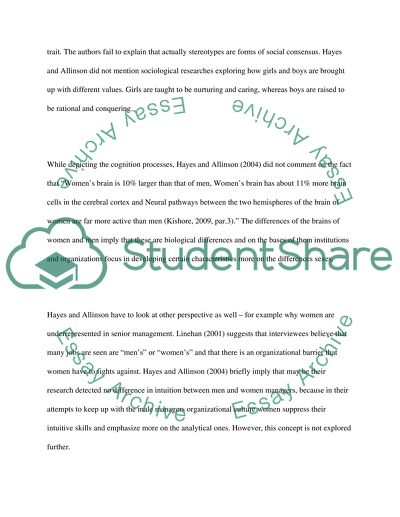Cite this document
(Intuition-analysis in Women Managers and Gendered Stereotypes by Hayes Article, n.d.)
Intuition-analysis in Women Managers and Gendered Stereotypes by Hayes Article. Retrieved from https://studentshare.org/gender-sexual-studies/1516730-women-managers-and-gendered-stereotypes
Intuition-analysis in Women Managers and Gendered Stereotypes by Hayes Article. Retrieved from https://studentshare.org/gender-sexual-studies/1516730-women-managers-and-gendered-stereotypes
(Intuition-Analysis in Women Managers and Gendered Stereotypes by Hayes Article)
Intuition-Analysis in Women Managers and Gendered Stereotypes by Hayes Article. https://studentshare.org/gender-sexual-studies/1516730-women-managers-and-gendered-stereotypes.
Intuition-Analysis in Women Managers and Gendered Stereotypes by Hayes Article. https://studentshare.org/gender-sexual-studies/1516730-women-managers-and-gendered-stereotypes.
“Intuition-Analysis in Women Managers and Gendered Stereotypes by Hayes Article”, n.d. https://studentshare.org/gender-sexual-studies/1516730-women-managers-and-gendered-stereotypes.


